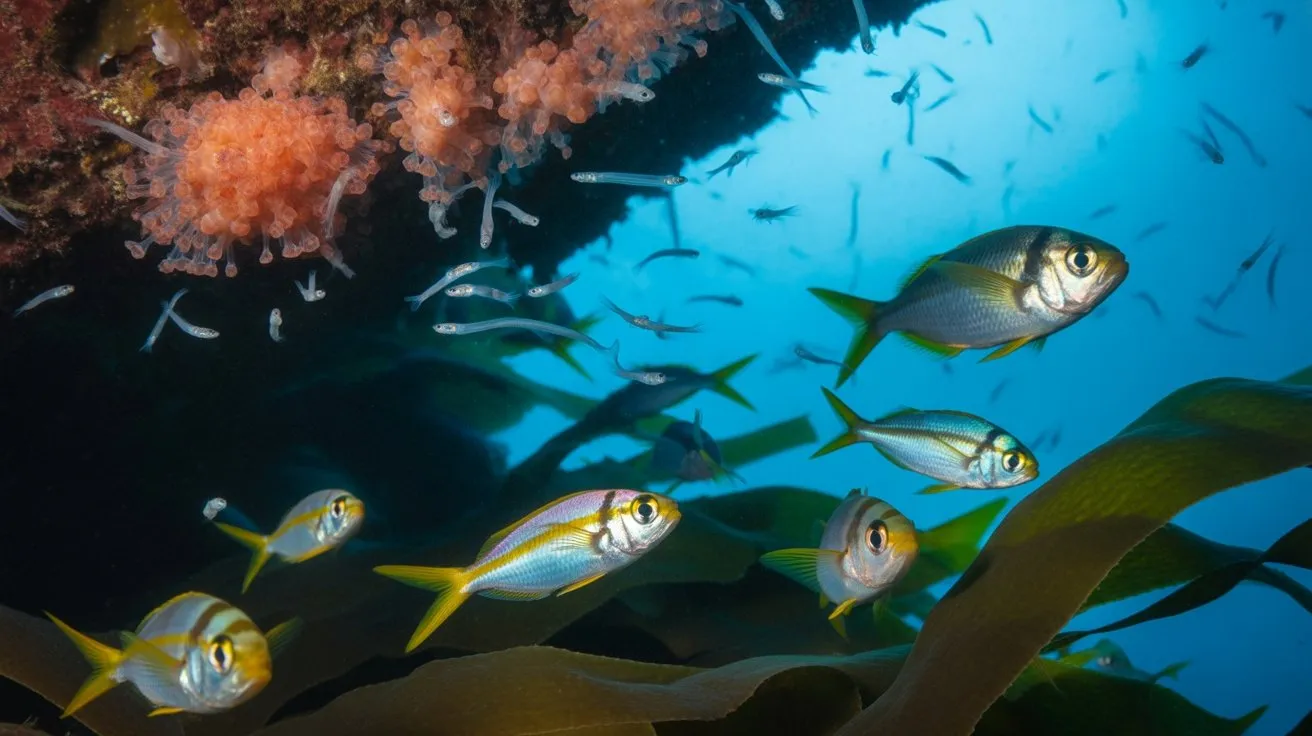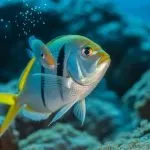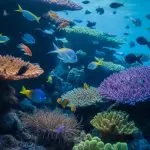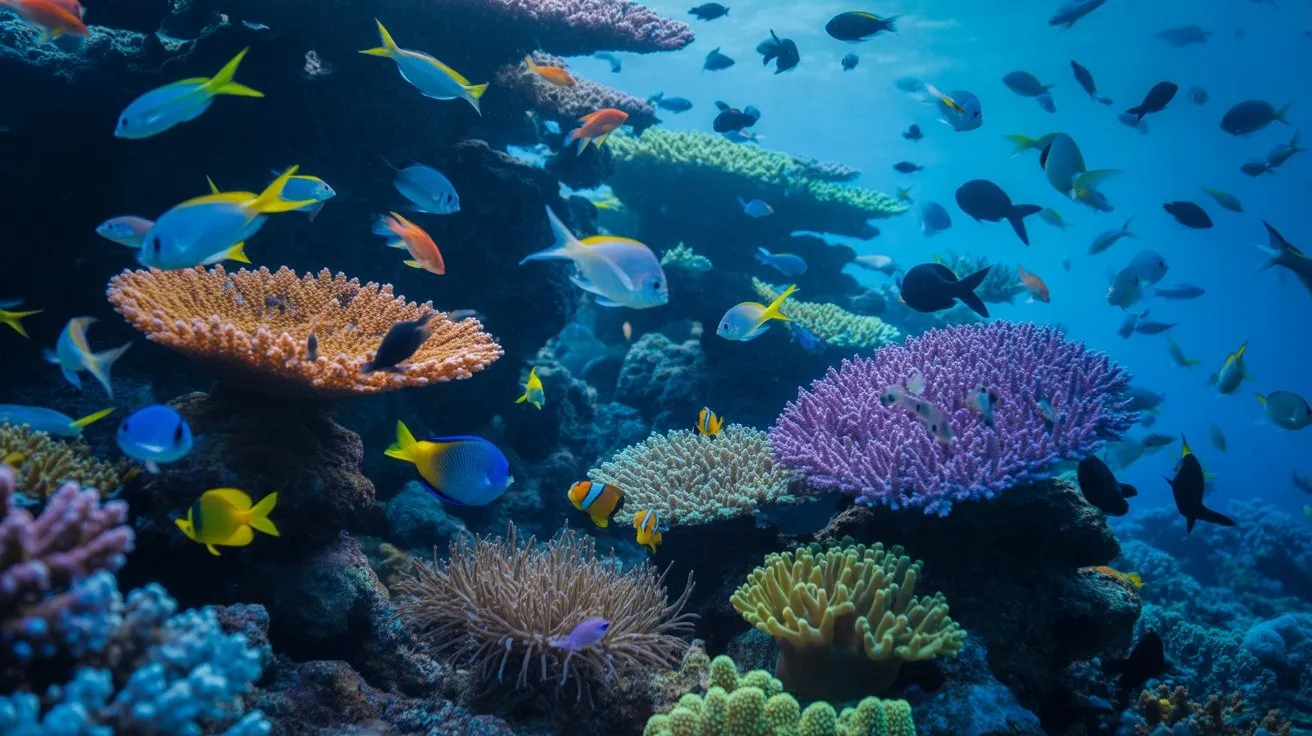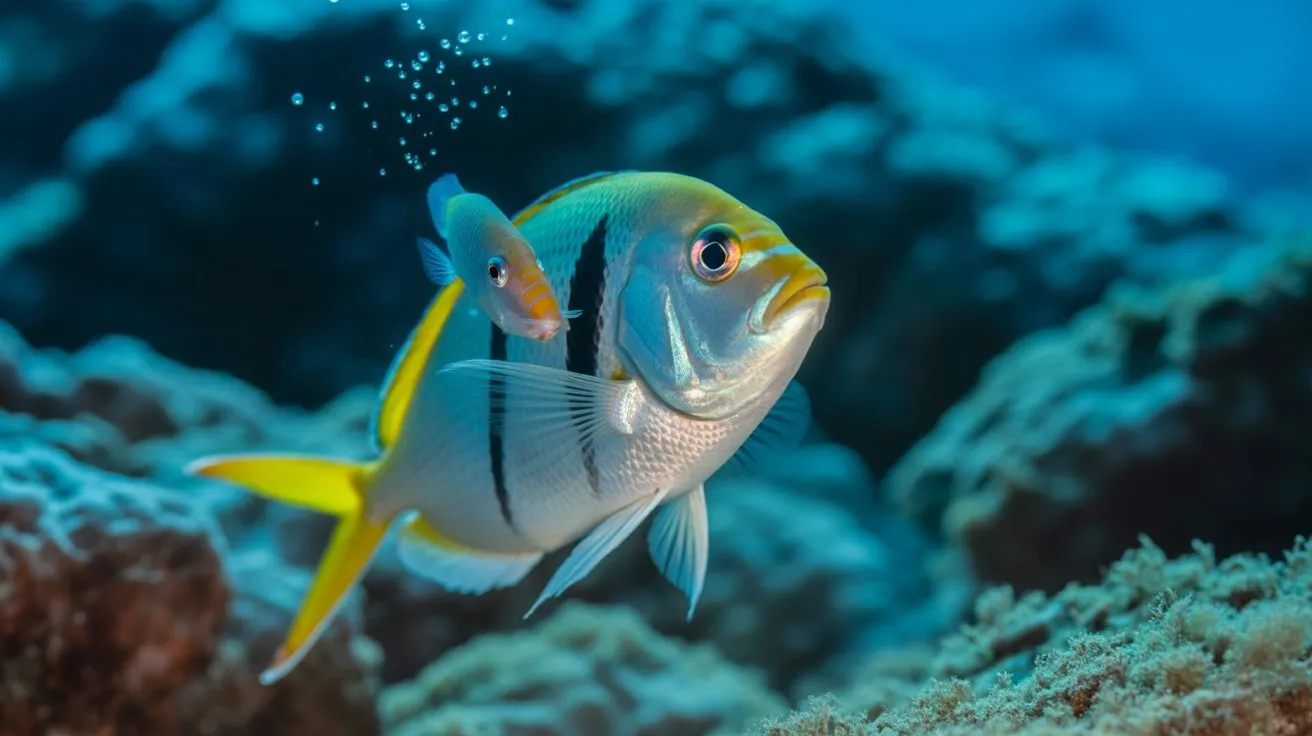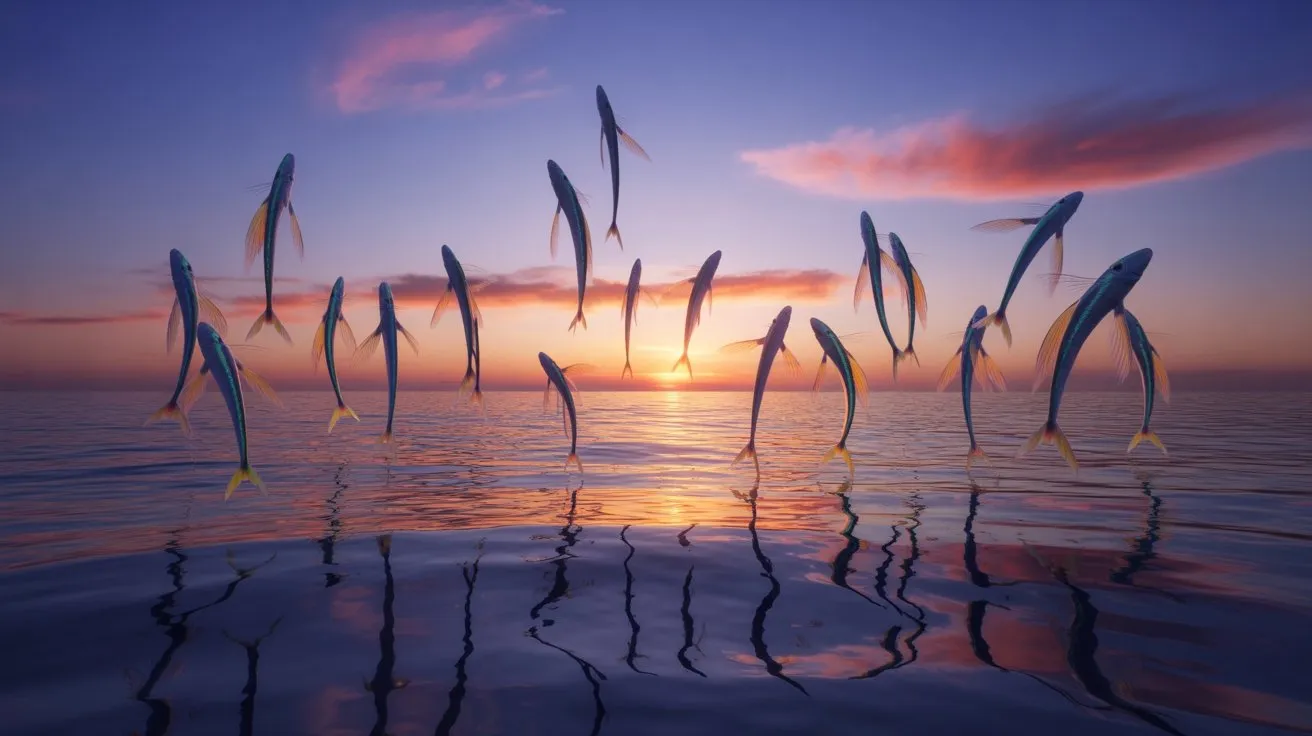You’ll find that a single ocean sunfish can release up to 300 million eggs during spawning season, yet only a fraction survive to adulthood. This staggering mortality rate reflects the complex developmental progression from fertilized egg to sexually mature adult. Each life stage presents distinct physiological challenges and environmental pressures that shape survival rates. Understanding these critical transformation periods reveals why oceanographers consider fish reproduction one of nature’s most precarious biological processes.
The Spawn: Fertilization and Egg Development in Ocean Waters
When ocean fish reach sexual maturity, they engage in spawning behaviors that release millions of gametes into the water column, initiating external fertilization processes critical to species continuation.
You’ll observe females broadcasting eggs while males simultaneously release sperm clouds, creating fertilization zones with concentrations reaching 10⁶ sperm per milliliter.
Fertilized eggs develop rapidly—typically within 12-72 hours depending on species and water temperature. You’ll find pelagic eggs floating in surface waters, measuring 0.5-7mm in diameter, containing oil globules for buoyancy regulation.
Temperature directly affects development rates: 2°C increases can halve incubation periods.
Embryonic development progresses through blastulation, gastrulation, and organogenesis phases.
Survival rates remain low—often less than 1% reach juvenile stages due to predation, environmental stressors, and dispersal factors affecting recruitment success.
Hatching and the Vulnerable Larval Stage
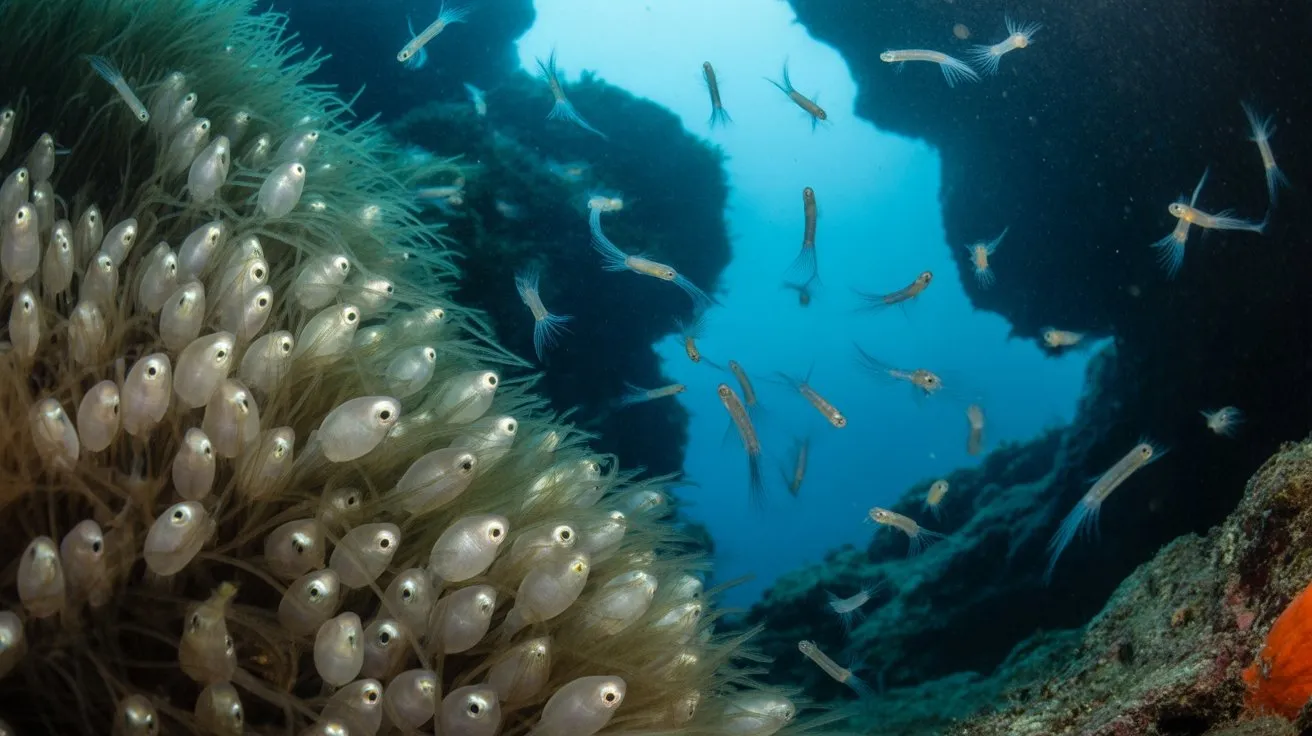
After successful embryonic development, ocean fish larvae emerge from their protective chorions through enzymatic breakdown and mechanical rupture, measuring 2-15mm in total length with poorly developed fins and digestive systems. You’ll observe that these transparent, elongated organisms face immediate survival challenges in the pelagic environment.
| Larval Feature | Day 1-3 | Week 2-4 |
|---|---|---|
| Yolk sac size | 80% body volume | Completely absorbed |
| Mortality rate | 95% daily | 15% daily |
| Feeding ability | Non-functional mouth | Active predation |
During this critical phase, you’re witnessing nature’s brutal mathematics. Larvae depend entirely on their finite yolk reserves while developing functional mouth parts, digestive organs, and swimming capabilities. They’re fundamentally defenseless against predation, starvation, and environmental fluctuations. Most won’t survive beyond their first week.
Metamorphosis: Transformation From Larvae to Juveniles
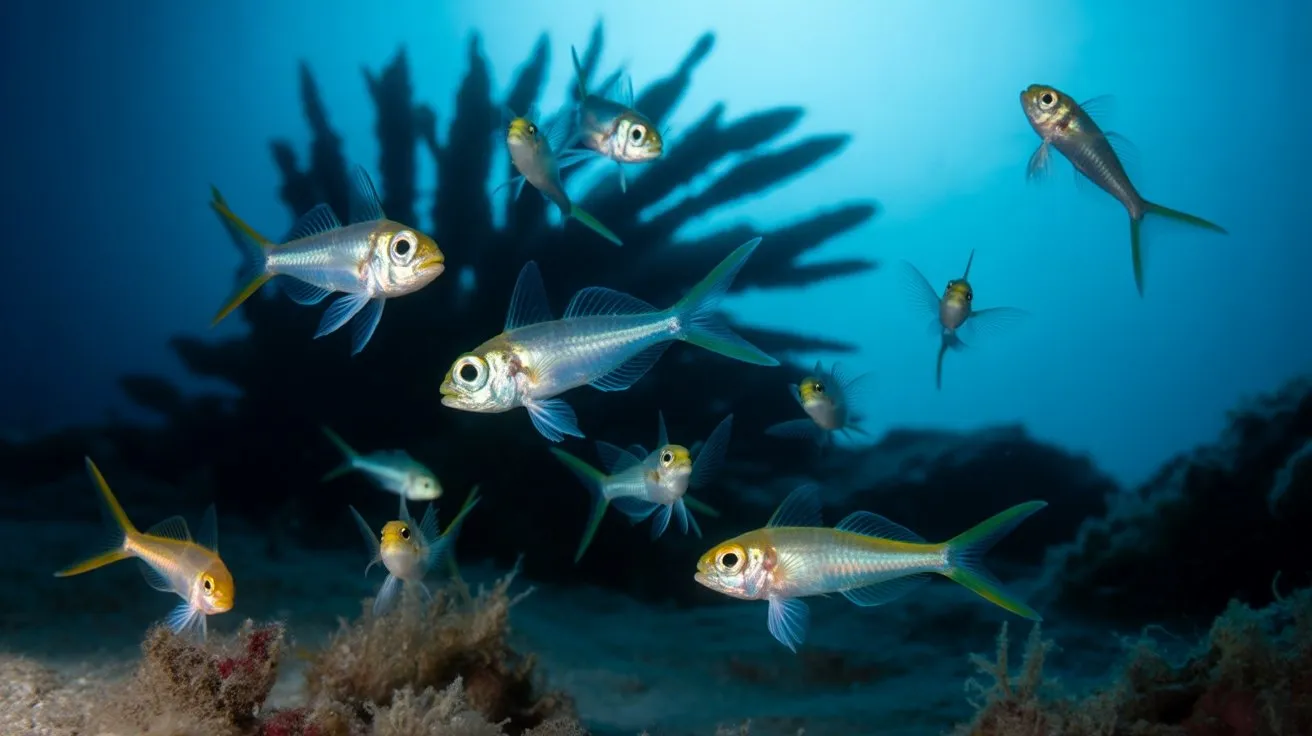
Those larvae that successfully navigate the initial survival gauntlet undergo metamorphosis, a complex physiological reorganization that transforms their primitive body plan into a juvenile fish architecture.
You’ll observe dramatic structural changes as neural pathways consolidate, skeletal ossification accelerates, and organ systems mature. The transformation typically occurs over 2-4 weeks, depending on species and environmental conditions.
Key metamorphic changes include:
- Fin development: Primitive fin folds differentiate into specialized dorsal, anal, and caudal fins with supporting ray structures.
- Scale formation: Protective dermal scales emerge through calcium carbonate deposition, replacing transparent larval integument.
- Sensory enhancement: Lateral line systems activate while eyes migrate to adult positions, optimizing predator detection capabilities.
This metamorphosis marks the shift from passive drifters to active swimmers with enhanced survival probability.
Juvenile Growth Phase: Learning to Survive and Thrive
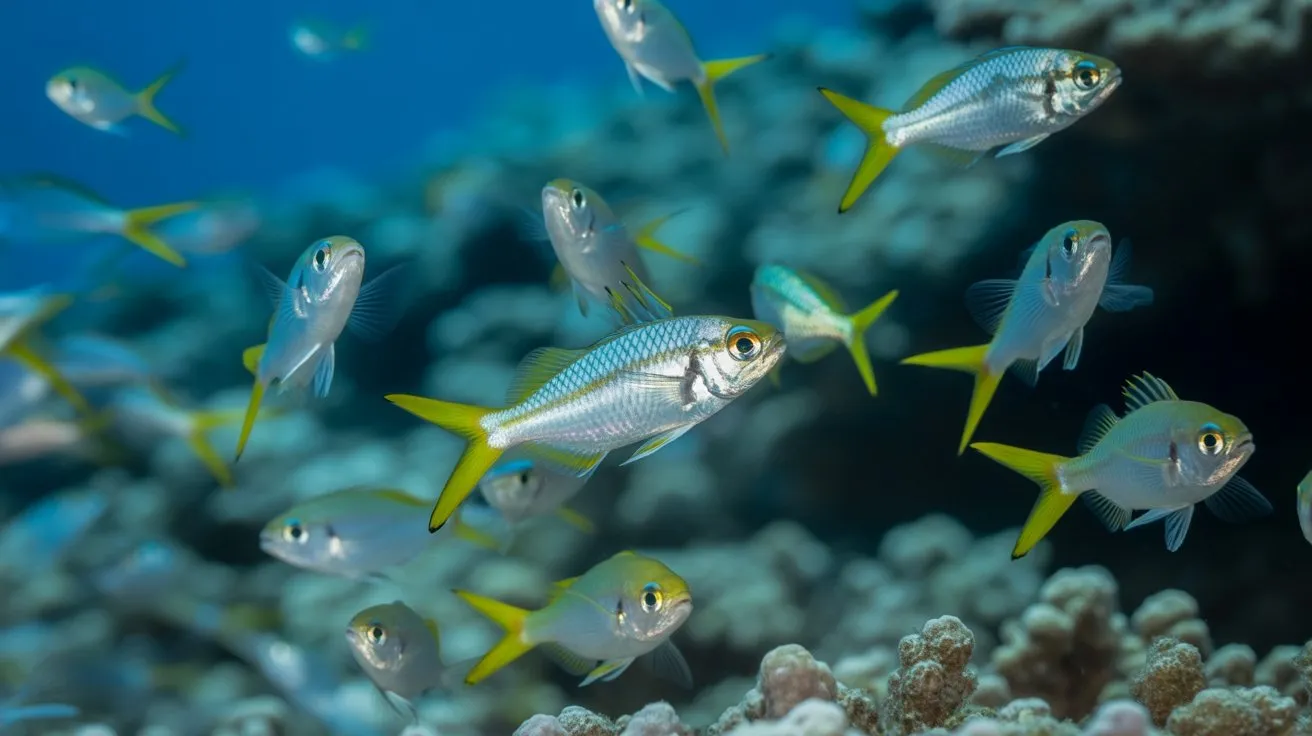
Since juvenile fish have completed their metamorphosis, they enter a critical growth phase where behavioral adaptation determines long-term survival success.
You’ll observe that juveniles develop specialized feeding strategies, evolving from passive filter-feeding to active prey selection. During this phase, they exhibit rapid somatic growth rates of 2-15% body weight daily, depending on species and environmental conditions.
Juveniles must acquire essential skills including predator recognition, territorial behavior, and schooling dynamics.
You’ll notice they develop enhanced sensory capabilities, with lateral line systems becoming fully functional for detecting water movements and pressure changes. Dietary shifts occur as mouth morphology develops, enabling consumption of larger prey items.
This phase typically lasts 3-18 months, with survival rates ranging from 1-10%.
Environmental factors like temperature, food availability, and habitat complexity directly influence growth trajectories and behavioral development patterns.
Sexual Maturity and Adult Reproduction Cycles
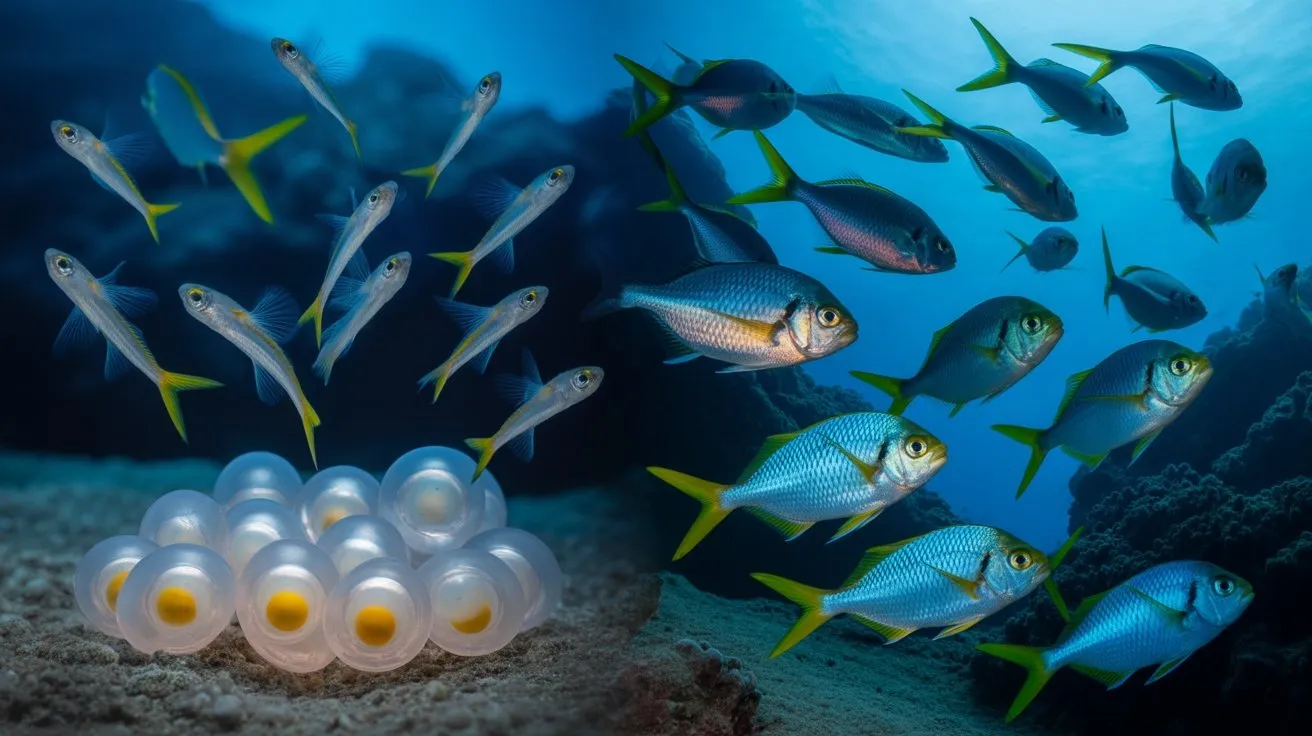
Ocean fish reach sexual maturity when they’ve accumulated sufficient energy reserves and achieved species-specific size thresholds, typically occurring between 6 months to several years post-metamorphosis.
You’ll observe that environmental cues—temperature fluctuations, photoperiod changes, and prey availability—trigger hormonal cascades initiating reproductive readiness. Gonadotropin-releasing hormone stimulates gonad development, while cortisol levels regulate spawning timing.
Adult reproduction cycles demonstrate remarkable diversity:
- Broadcast spawners release millions of pelagic eggs simultaneously during synchronized spawning aggregations.
- Nest builders construct elaborate territories using substrate materials, exhibiting complex courtship displays and parental care behaviors.
- Live bearers develop internal fertilization mechanisms, nourishing embryos through specialized structures until birth.
You’ll find that successful reproduction requires precise coordination between physiological readiness, environmental conditions, and behavioral adaptations ensuring species continuation.
Environmental Factors Shaping Fish Life Cycles
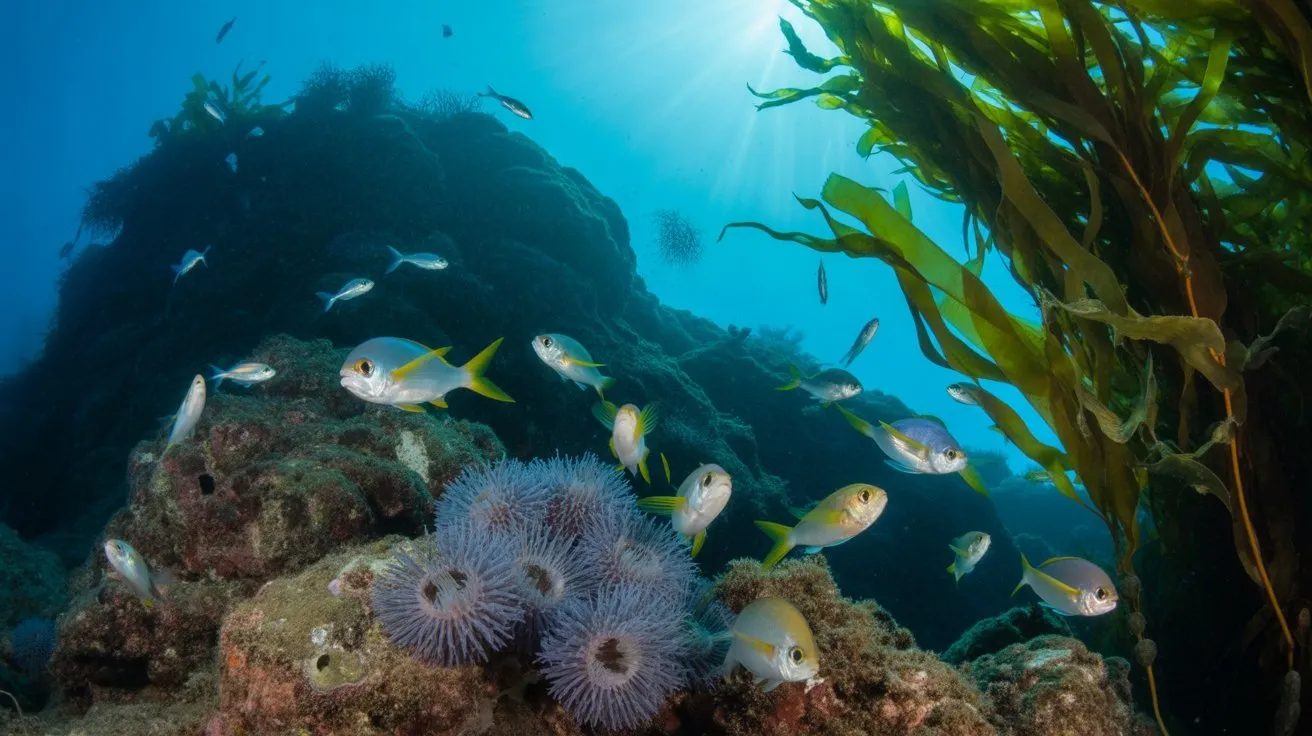
While reproductive cycles establish the biological framework for fish continuation, environmental variables act as primary drivers determining when, where, and how successfully these cycles unfold.
You’ll find temperature directly influences metabolic rates, spawning timing, and larval development speeds. Photoperiod triggers hormonal changes that initiate reproductive behaviors in many species.
Ocean currents affect nutrient distribution and larval dispersal patterns, while salinity fluctuations impact osmoregulation during critical developmental stages.
You’ll observe that dissolved oxygen levels determine habitat suitability and growth rates. Food availability controls energy allocation between growth and reproduction.
Seasonal variations create predictable patterns, yet climate change disrupts established cycles. Understanding these interconnected factors helps you predict population dynamics and assess ecosystem health in marine environments. Additionally, ocean temperature plays a crucial role in shaping the habitat and survival rates of fish species during different life stages.
Conclusion
You’ve witnessed how ocean fish navigate their complex life cycle, much like a spacecraft’s multi-stage journey to orbit. Consider that a single Atlantic cod releases up to 9 million eggs, yet fewer than 0.1% reach adulthood—demonstrating the extraordinary selective pressure driving evolutionary adaptations. You’re observing nature’s most efficient filtration system, where environmental variables, predation rates, and resource availability determine which genetic combinations successfully complete this pelagic odyssey from microscopic embryo to reproductive adult.
